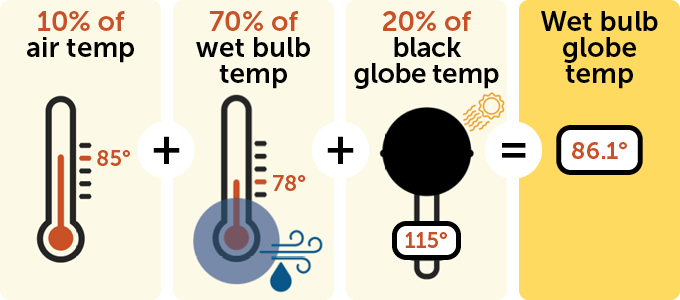Extreme Climate Survey
Scientific news is collecting questions from readers about how to navigate our planet’s changing climate.
What do you want to know about extreme heat and how it can lead to extreme weather events?
In the midst of all this heat, it’s important to remember that the thermometer doesn’t always tell how hot our bodies feel. This brings us to this week’s reader question from Robert Ball:
What is the heat index?
The heat index, or apparent temperature, takes humidity into account along with temperature to show how hot we really feel. This is why forecasts are often referred to as “as if” temperatures.
Moisture is important because the body’s primary cooling mechanism in hot weather is sweating (SN: 27/7/22). When sweat evaporates from the skin, it removes heat from the body. But if the air holds too much moisture, the evaporation of sweat slows down. In 100 percent humidity, little or no sweat evaporates.
It is important to note that the heat index has one major limitation: it was created for shaded conditions with little wind. If you are working or exercising outdoors, a more useful indicator would probably be the wet bulb temperature, or WBGT, which provides the apparent temperature in direct sunlight.
Getting the WBGT is a bit more complicated than calculating the heat index. First, measure the air temperature with a thermometer that is protected from sunlight and moisture. Next, measure the “wet bulb” temperature with a thermometer that is wrapped in a wet cloth, mimicking the cooling effect of sweating. Finally, you need a thermometer inside a copper globe that is painted black and positioned in direct sunlight, to measure heat stress from sunlight. Add 10 percent air temperature, 70 percent wet bulb temperature, and 20 percent black globe temperature to calculate WBGT.

The key here is that when compared to temperature alone, heat index and WBGT can help give a more complete picture of how we feel heat and when we need to take action to avoid heat stroke and exhaustion. These are vital tools in a world where heat waves are becoming more common and more intense (SN: 4/3/18).
Please keep sending in your questions about Earth’s extreme heat and climate change—we’ll be looking for questions to answer in future Extreme Climate Update columns.
#Climate #change #fueling #extreme #heat #roasting #Frances #Olympics
Image Source : www.sciencenews.org